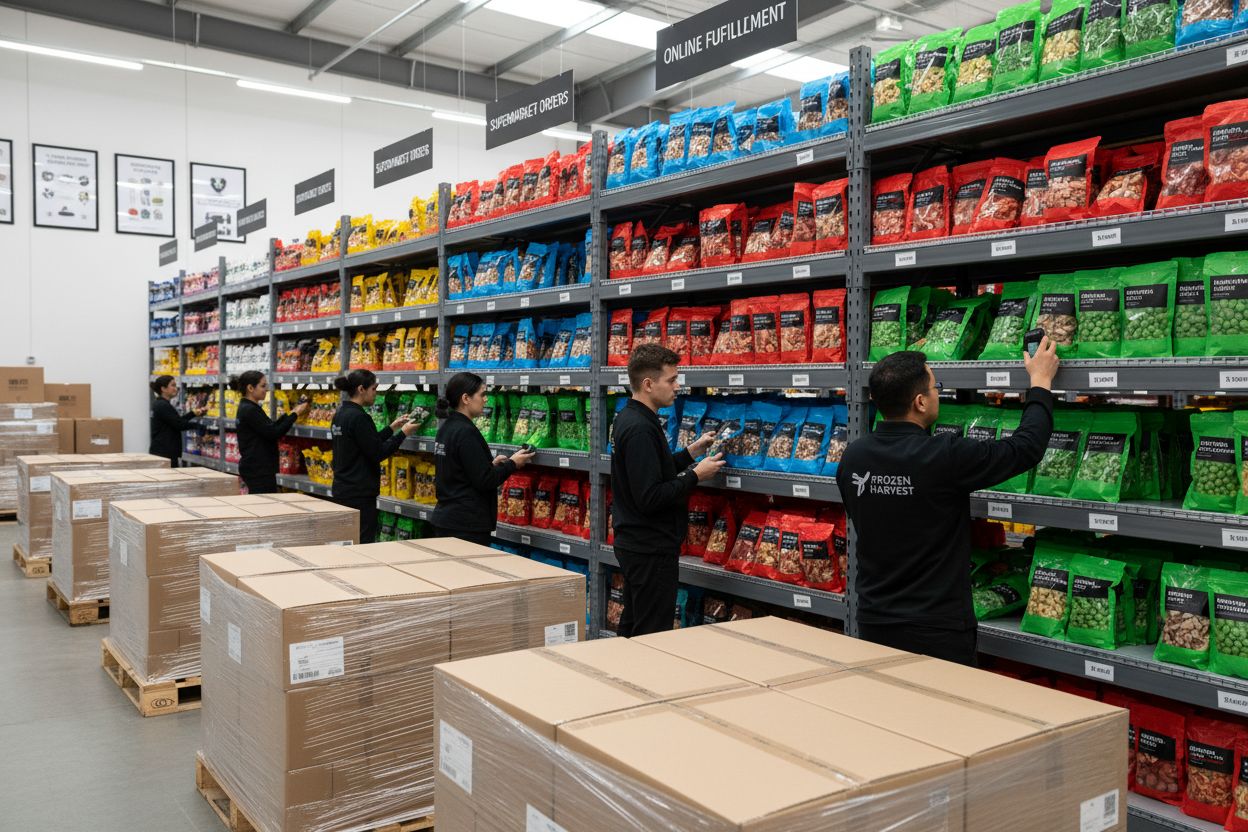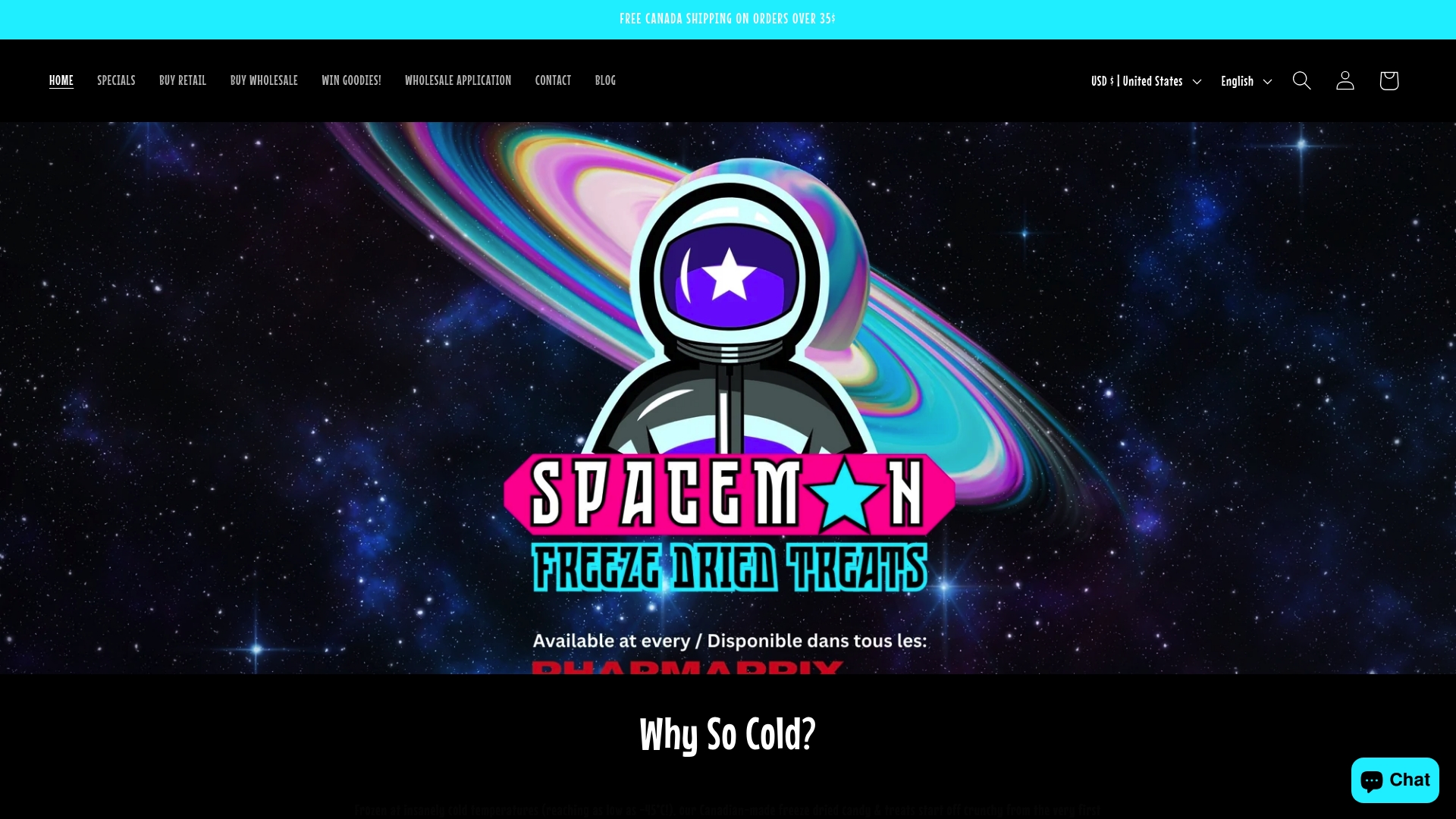Did you know that freeze-drying can remove over 90 percent of water from food while keeping its nutrients and flavor? This process is transforming both snack aisles and meal prep worldwide, making food lighter, crunchier, and able to last for years. As more people seek innovative ways to preserve taste and nutrition, understanding how freeze-drying works explains why it has become a favorite method for everything from fresh fruit to your favorite candies.
Key Takeaways
| Point | Details |
|---|---|
| Freeze Drying Process | The freeze drying process removes over 90% of water content from food, preserving its flavor, structure, and nutritional value through freezing, sublimation, and secondary drying. |
| Versatile Applications | Freeze drying is applicable across various food categories, with significant market shares in fruits, vegetables, beverages, and prepared meals, opening up new culinary possibilities. |
| Consumer Demand | There is a growing consumer interest in lightweight, long-lasting, and nutritionally dense foods, driving the expansion of freeze-dried products in both retail and commercial segments. |
| Safety and Storage | Proper packaging, storage, and labeling are crucial to maintain the quality and safety of freeze-dried foods, emphasizing the importance of moisture protection and accurate consumer information. |
Table of Contents
- Freeze Drying Explained: How The Process Works
- Types Of Foods You Can Freeze Dry
- Popular Freeze-Dried Candy And Snack Ideas
- Commercial And Retail Applications For Freeze Drying
- Safety, Storage, And Labeling Guidelines
Freeze Drying Explained: How the Process Works
Freeze drying is a fascinating food preservation technique that transforms ordinary products into lightweight, crunchy delights while maintaining their original nutritional profile. Learn more about the science behind freeze drying and why it’s becoming a game-changer in food technology.
According to research from EBSCO, freeze-drying is a specialized process that removes over 90% of water content from food, creating a uniquely porous and lightweight product. The scientific method, also known as lyophilization, involves three critical stages:
- Freezing the product at extremely low temperatures
- Reducing atmospheric pressure to enable sublimation
- Removing bound water molecules through secondary drying
The result? A preserved food item that retains its:
- Original shape and structure
- Intense flavor profile
- Complete nutritional content
- Ability to rapidly rehydrate when needed
What makes freeze drying truly remarkable is its ability to maintain the integrity of food items without compromising their essential characteristics.
Whether it’s fruits, vegetables, or complex food products, this process ensures that every bite delivers maximum taste and nutritional value. By gently removing moisture through sublimation, freeze-dried foods can be stored for extended periods without losing their original quality.
Types of Foods You Can Freeze Dry
Freeze drying isn’t just a one-trick pony. Discover the incredible versatility of freeze-dried foods and how this preservation method can transform an impressive range of ingredients. According to global market research, the freeze-dried food landscape is remarkably diverse and expanding rapidly.
Fruits and Produce
Global market data reveals that fruits dominate the freeze-dried market, representing approximately 22% of all products. Popular options include:
- Strawberries
- Mangoes
- Bananas
- Apples
Vegetables follow closely, accounting for about 18% of freeze-dried products, with favorites like peas, carrots, and corn leading the charge. These produce items retain their nutritional integrity, color, and most importantly, their original flavor profile during the freeze-drying process.
Here’s a summary of the main freeze-dried food categories and their market share:
![]()
| Food Category | Example Products | Approx. Market Share |
|---|---|---|
| Fruits | Strawberries Mangoes Bananas Apples |
22% |
| Vegetables | Peas Carrots Corn |
18% |
| Beverages | Instant coffee Tea extracts |
10% |
| Prepared Meals | Meal mixes | 20% |
| Other Foods | Meats Dairy Spices Tomatoes Exotic fruits |
30% |
Beverages and Prepared Meals
Research from industry reports highlights two more fascinating categories in freeze-drying. Beverages like instant coffee and tea extracts constitute around 10% of the market, while prepared meal mixes represent a substantial 20%. This demonstrates the technology’s incredible adaptability.
Additionally, scientific studies confirm that freeze-drying successfully preserves a wide variety of foods beyond these categories. Meats, dairy products, spices, tomatoes, and even more exotic ingredients like guava can be transformed into lightweight, long-lasting products without compromising their essential characteristics. The result? A preservation method that opens up endless culinary possibilities for food lovers, preppers, and adventurous eaters alike.

Popular Freeze-Dried Candy and Snack Ideas
Dive into the world of freeze-dried treats that are transforming the snack landscape. According to confectionery industry reports, the freeze-dried candy market is experiencing an explosive growth trajectory, projected to reach an impressive €2.2 billion by 2030.
Candy Transformation Favorites
Freeze-drying turns ordinary candies into extraordinary sensory experiences. Some standout transformations include:
- Skittles: Become popcorn-like, with an incredibly light and crispy texture
- Marshmallows: Transform into crunchy, airy toppings perfect for desserts
- Chocolate-covered treats: Require special scoring to ensure proper moisture escape
- Peanut butter bars: Maintain their flavor while gaining a unique crunch
Pro Tip: Not all candies freeze-dry the same way. Experiment to find your perfect texture!
The trend has caught major manufacturers’ attention. Hershey is launching Jolly Rancher Freeze Dried in 2025, while Skittles is introducing their POP’d line in 2024. Social media platforms like TikTok have been instrumental in driving this snack revolution, with creators showcasing the mesmerizing texture and taste transformations.
Beyond traditional candies, the freeze-dried snack world is expanding to include vegan bars, diverse chocolate varieties, and even unexpected treats that gain an entirely new dimension through this innovative preservation technique. The result? A snacking experience that’s crispy, intense, and absolutely Instagram-worthy.
Commercial and Retail Applications for Freeze Drying
Explore the revolutionary potential of freeze-dried products across diverse industries. According to food industry research, freeze-dried technologies are reshaping commercial and retail landscapes with unprecedented versatility.
Retail and Consumer Channels
Freeze-dried products have penetrated multiple retail environments, including:
- Supermarkets
- Specialist retailers
- Convenience stores
- E-commerce platforms
This widespread adoption reflects consumer demand for lightweight, long-lasting, and nutritionally dense food options that don’t compromise on taste or quality.
Professional and Institutional Markets
Beyond traditional retail, freeze-dried technologies are critical in several professional sectors:
- Food & Beverage Industry: Creating innovative product lines
- Hospitality: Developing unique culinary experiences
- Military and Emergency Services: Providing reliable, portable nutrition
- Airlines: Offering compact, lightweight meal solutions
Key Insight: Freeze-dried products offer unprecedented flexibility across multiple commercial applications.
The remarkable versatility of freeze-drying extends far beyond simple preservation. It represents a transformative technology enabling businesses to reimagine food storage, distribution, and consumption. From gourmet restaurants experimenting with texture to emergency response teams ensuring nutritional readiness, freeze-dried products are revolutionizing how we think about food functionality and accessibility.
Safety, Storage, and Labeling Guidelines
Navigate the critical world of food preservation standards with confidence. Freeze-dried products demand meticulous handling to maintain their incredible quality and safety standards.
Packaging and Moisture Protection
According to research, proper packaging is the cornerstone of freeze-dried food preservation. Key considerations include:
- Inert gas packaging: Prevents moisture reabsorption
- Moisture-proof containers: Critical for long-term storage
- Low moisture content: Naturally inhibits microbial growth
Safety Tip: Always choose packaging that completely seals out environmental moisture.
Storage Best Practices
Freeze-dried foods require specific storage conditions to maintain their exceptional quality:
- Store in cool, dry environments
- Use airtight containers
- Keep away from direct sunlight
- Maintain consistent temperature
Labeling Requirements
Proper labeling is not just a legal requirement but a critical consumer safety measure. Essential label information should include:
- Nutritional content
- Ingredient list
- Expiration date
- Storage instructions
- Batch or lot number
- Manufacturer contact information
The unique preservation process of freeze-drying offers remarkable food safety advantages. By removing moisture, these products create an environment that naturally prevents bacterial growth, extending shelf life while maintaining nutritional integrity. Proper packaging and labeling transform these lightweight, nutrient-dense foods into safe, convenient nutrition solutions for diverse consumer needs.
Unlock the Full Power of Freeze Drying With Space Man
Curious about what you can freeze dry or how to keep your products crisp, flavorful, and shelf-stable for 2025 and beyond? If you are discovering new possibilities from our complete guide and want to go from inspiration to real results, we are here to help. As highlighted in the article, professional freeze drying is not just about experimentations in the kitchen. For many, the real challenge comes with preserving quality, scaling up production, and getting reliable packaging—all while meeting food safety and labeling requirements.

Take your freeze-dried creations to the next level. Partner with Space Man for expert manufacturing, private labeling, and trusted co-packing in Canada. Whether you need innovative freeze dried candy for your retail shelves or are ready to launch your own specialty brand, our private labeling and packaging solutions are here for you. Ready to stand out in the freeze-dried snack revolution? Visit our website and connect with us today for a custom quote or to explore B2C orders right from space-man.ca. Act now to lock in premium production slots for your next big product launch.
Frequently Asked Questions
What types of foods can I freeze dry?
You can freeze dry a wide variety of foods, including fruits (like strawberries and mangoes), vegetables (such as peas and carrots), beverages (like instant coffee and tea), prepared meals, and even snacks and candies. This method preserves the food’s original flavor, nutrition, and texture.
How does freeze drying differ from regular drying methods?
Freeze drying, or lyophilization, involves freezing the food, reducing atmospheric pressure to enable sublimation, and removing bound water molecules. This process retains more flavor, color, and nutritional content compared to other drying methods, which can alter the food’s characteristics.
Can freeze-dried foods be rehydrated easily?
Yes, freeze-dried foods can be rapidly rehydrated. When water is added, they regain their original shape, structure, and flavor, making them a convenient option for quick meals and snacks.
What are the best storage practices for freeze-dried foods?
To maintain the quality of freeze-dried foods, store them in cool, dry environments using airtight containers. It’s essential to keep them away from direct sunlight and to maintain a consistent temperature to extend their shelf life.

